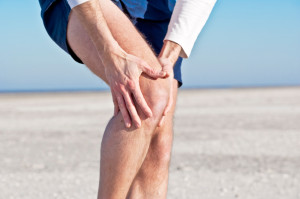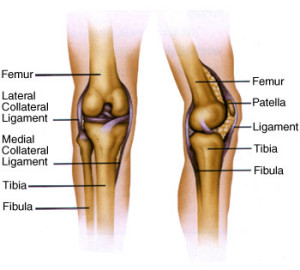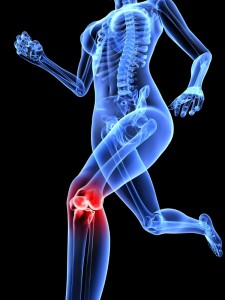Maybe you’re coming back from an injury, or you have an existing condition that makes impact on your joints unfeasible. Maybe you just want to mix up your workout routine a little. No matter the reason, low impact exercises are an excellent addition to any fitness program at any level of activity, from the beginner to the experienced athlete.
- Water Exercise. Water exercise is the most fantastic option if you want a low to no-impact workout that is still intense and burns calories. The water supports your body, and most workout classes in the water also employ flotation devices to further cushion you. There are all levels of water exercise available–in groups or even as a solo swimmer–year-round at indoor pools. Best of all, the water helps cool you, so you may find you feel less fatigued than if you had performed the same level of activity out of the water.
- Walking. It seems so simple, but walking on a smooth flat surface with the right footwear is both low impact and extremely healthy. There are a plethora of new apps dedicated to helping your walk be more interesting and interactive. Other walkers listen to audiobooks or podcasts.
- Elliptical Machines. If you’re ready to crank up your workout, the elliptical machine provides all the resistance and endurance, with none of the repetitive strain on your joints or feet. Used properly, the elliptical machine can burn 333 calories at a moderate pace in 45 minutes, all without causing pain or damage.
- Rowing Machines. This old-school piece of equipment is still a staple in every gym for good reason; it works the whole body, tones the upper body, and burns the same calories as an elliptical machine. It is important to have proper form, so if you’re ready to try it out, have a trainer walk you through how to use the equipment.
- Tai Chi/Yoga. Although these two practices are very different, we’re grouping them together because they provide similar benefits. Both work to control movement and use planned actions. Tai Chi emphasizes relaxation with constant movement while Yoga emphasizes stillness and frequent pauses, holding poses properly. They can both be used to improve balance, flexibility, and strength.
No matter how active you are, changing your routine and cross training can only benefit your healthy practices. If you’re looking to minimize the impact on your joints and limbs, these options are only the beginning; many more are available. However, if you are having pain during any activity, request an appointment today to speak to an orthopedic specialist about treatment, sports injury, or physical therapy.
Advanced Orthopedics and Sports Medicine Institute is a medical practice located in Freehold and Monroe, NJ, our medical professionals are experts in orthopedic surgery, joint replacement, sports medicine, integrative wellness, spine care, physical therapy, and more.
 With the changing of the seasons and the accompanying drop in the temperature outside, many athletes flock to the ski slopes, the ice rink, and the mountainside seeking outdoor adventure and fitness. Exercising in cold weather presents several unique nutritional challenges. Taking a few simple precautions can help maximize performance and keep athletes healthy and allow them to safely achieve their fitness goals
With the changing of the seasons and the accompanying drop in the temperature outside, many athletes flock to the ski slopes, the ice rink, and the mountainside seeking outdoor adventure and fitness. Exercising in cold weather presents several unique nutritional challenges. Taking a few simple precautions can help maximize performance and keep athletes healthy and allow them to safely achieve their fitness goals
 Worldwide, over 1.2 million total joints are being done each year. Approximately, 800,000 of these total joints are done in the US alone. Americans are therefore the biggest consumers of this very successful technology.
Worldwide, over 1.2 million total joints are being done each year. Approximately, 800,000 of these total joints are done in the US alone. Americans are therefore the biggest consumers of this very successful technology.
Traditionally, TJR is done in a hospital set up because most patients undergoing TJR are the elderly with medical comorbidities (the presence of other illness like Hypertension, Heart Disease, uncontrolled Diabetes etc).
The current generation of baby boomers however, are much healthier, live a longer life and tend to stay active at an older age. On the other hand, a lot of younger patients are having TJR because of damage to the joints at an early age caused by sports related injuries.
Improved perioperative anesthesia, development of new analgesics like Exparel, and the increasing sophistication and safety of Surgicenters, prompted the development of outpatient TJR. Approximately, 20 percent of TJR are now done safely, expediently and at a big savings to the insurance company at surgicenters. The recovery time is shortened, infection rate is cut down, certain institutions like the Northern Monmouth Surgicenter in Manalapan NJ, where I do most of my outpatient work is close to zero percent.
There are certain reasons why TJR cannot be done in an outpatient setup. Medicare and certain private insurance companies will not authorize the TJR to be done as outpatient. It is my belief that the insurance companies will eventually see the value of doing outpatient TJR.
Any surgical patient with a severe medical condition obviously should be done in a hospital setup.
Examples of TJRs being performed in a Surgicenter, Total Hip Replacement (THR), Total Knee Replacement (TKR), Total Shoulder Replacement (TSR), Reverse Total Shoulder Replacement ( rTSR), Total Ankle Replacement (TAR) If you have any questions regarding surgery in an outpatient setup, please call for in office consultation.
Manuel T Banzon MD FAAOS
04-20-2015
Our body’s joints are among its most important features. Connecting the body’s bones to facilitate healthy locomotion, joints enable a high degree of mobility and allow us to complete everyday tasks and enjoy active recreation. Though highly capable, joints are delicate and require careful maintenance to stay in optimal condition. The wear and tear of regular motion as well as the toll of aging and the risks posed by injury can all restrict or reduce the function of the body’s joints. The orthopedic specialist team at Advanced Orthopedic and Sports Medicine Institute regularly performs procedures to restore joint function and address joint-related concerns. While these procedures are expertly carried out, prevention is the most straightforward way to keep joints in good health.
Weight is a prime cause of joint issues: keeping weight within a healthy range is one of the best things a patient can do for his or her joints. Exercise can help patients manage weight as well as address joint issues on its own: aerobic exercise can reduce joint swelling. Low-impact exercises, such as swimming or biking, can provide this benefit without stressing joints with unnecessary impact. Finally, building muscles with strength training exercises helps to support the joints those muscles surround. This alleviates the burden the body’s joints constantly bear.
Joint health is a major specialty of many doctors at AOSMI, including Dr. James F. Cozzarelli, MD, FAAOS. Dr. Cozzarelli is trusted by his patients to share his insight and explain his specialist knowledge clearly to everyone he can help. Visiting his site or getting in touch with AOSMI are great next steps for those who want to keep their joints in top condition throughout their lives.
AOSMI orthopedic surgeons have pioneered a new bloodless surgery protocol for joint replacement and other orthopedic procedures. Advanced Ortho Sports gives patients that they need in a number of areas, including sports medicine, joint replacement, spine care, fracture care, hand and wrist injuries, and urgent care. This new procedure is just another example of top quality care available from the orthopedic specialists.
With the use of tranexamic acid as well as advanced surgical coagulation techniques, blood loss and the need for transfusions have been significantly reduced. Since blood transfusions have many potential side effects and risks, patients are much more comfortable having surgery with the new technique which avoids the need for transfusions in the vast majority of patients.
In addition, patients feel better and more vigorous after surgery since they have more circulating oxygen in their blood and are less prone to anemia. This allows more surgeries to be performed without the need for hospitalization and intensive monitoring, resulting in significant cost savings.
For more information about orthopedic surgery at Advanced Ortho Sports, visit https://advancedorthosports.com/orthopedic-care.
 Physicians at Advanced Orthopedics perform minimally invasive, arthroscopic surgery using small cameras equipped with fiber-optic light technology to view damaged joints on a monitor screen. Inserted through a tiny incision in the skin that is less than one centimeter in size, these cameras allow arthroscopic surgeons to trim torn knee meniscus, repair rotator cuff injuries, treat bursitis of the shoulder and restore functioning of damaged knee cartilage . During the procedure, special fluid is pumped into the joint area to enhance visibility while clearing away any unnecessary tissue debris.
Physicians at Advanced Orthopedics perform minimally invasive, arthroscopic surgery using small cameras equipped with fiber-optic light technology to view damaged joints on a monitor screen. Inserted through a tiny incision in the skin that is less than one centimeter in size, these cameras allow arthroscopic surgeons to trim torn knee meniscus, repair rotator cuff injuries, treat bursitis of the shoulder and restore functioning of damaged knee cartilage . During the procedure, special fluid is pumped into the joint area to enhance visibility while clearing away any unnecessary tissue debris.
Advantages to arthroscopic surgery include:
- Reduced recovery time (many of these procedures are performed as out-patient surgery)
- In some cases, patients may only need a local anesthetic instead of general anesthetic
- Thirty minutes is the average time it takes to complete most arthroscopic knee surgeries
- Pain is minimal following surgery, with most patients requiring only ibuprofen instead of prescription pain medication to alleviate any discomfort
Arthroscopic surgery dramatically reduces joint tissue trauma and is conducive to the restoration of optimal muscle functioning. It is also utilized as a diagnostic tool to determine the cause of joint stiffness and pain or the extent of damage to joint ligaments.
 Any orthopedic specialist will confirm that the vast majority of the knee injuries they see on a daily basis could either have been prevented in the first place or treated earlier to prevent serious injury. Unless the idea of joint replacement surgery seems like a good time for you, read on to learn the three most common ways knees can deteriorate. Knowing what to avoid will help you limit your need for New Jersey orthopedic surgeons.
Any orthopedic specialist will confirm that the vast majority of the knee injuries they see on a daily basis could either have been prevented in the first place or treated earlier to prevent serious injury. Unless the idea of joint replacement surgery seems like a good time for you, read on to learn the three most common ways knees can deteriorate. Knowing what to avoid will help you limit your need for New Jersey orthopedic surgeons.
Three Ways to Destroy Your Knees:
- Ignore Consistent Pain: When it comes to preventing serious and lifelong knee injuries, there simply isn’t anything more important than getting any and all knee pain checked out. As a general rule, if the pain in your knee is limiting your ability to do what you normally do, get it looked at. This can prevent a litany of further damage.
- Being Overweight: By now, no one is unaware of the dangers of carrying around significantly extra body weight. You knee health is directly related to how much extra weight they are being asked to support.
- Poor Follow Through: Should a sports injury result in knee damage, not following through with rehab and rest is an express path towards lifelong knee problems. It is up to you to take your doctor’s orders to heart and complete the physical therapy and rest time that is prescribed. Doing so now will save you decades of trouble later!
Can You Benefit from Cartilage Replacement Surgery?
Chances are you probably won’t give much thought to the protective cartilage that cushions your bones until it wears down to the point that it becomes raw and painful. Each year, thousands of people must undergo surgery to repair torn cartilage because the pain interferes with their daily lives. Repair usually means shaving damaged cartilage, but many younger, more active patients are excellent candidates for cartilage replacement surgery. This exciting therapy aims to eliminate pain, restore function and reduce or delay the need for total joint arthroplasty. So, what exactly is cartilage, and how can it be damaged and repaired?
What is cartilage?
Cartilage is a rubbery, smooth substance found in every joint in your body. It serves to help bones glide smoothly within a joint and as shock absorption.
How can cartilage be damaged?
Your cartilage can be damaged through trauma such as twisting or direct impact; ligament injuries that make your joint unstable or loose resulting in damage to the joint surface cartilage; and poorly aligned joints placing excess pressure on cartilage. The damage can be painful, as well as limit everyday activities like walking.
What are your options for treatment?
While cartilage can be damaged in the hip, ankle, shoulder and elbow, the most common area of injury is the knee. Cartilage replacement in knee injuries is an excellent alternative to total knee replacement and especially promising for more active patients. Some of the treatment options involved in cartilage replacement surgery include:
- Arthroscopic and open cartilage replacement procedures
- Performed through small incisions, these are used to stimulate cartilage restoration, replace areas of damaged cartilage with healthy cartilage from elsewhere in the knee, replace damaged cartilage with donor cartilage and bone, or encourage knee cartilage regeneration using your own cartilage cells.
- Limited (partial) replacement of joint surfaces
Used instead of total joint replacement for older active patients
- Realignment procedures
Called osteotomies, this can be done to take pressure off of damaged and repaired areas of the joint.
Who can be treated?
Anyone from teens to middle-aged adults can be treated with the techniques that orthopedic surgeons use to repair or regenerate cartilage. The surgery can be performed at an outpatient surgery center or a hospital, depending on the procedure.
What happens after you’ve had treatment?
After you have cartilage replacement surgery in a joint, you must return to activity gradually. It will take time and patience, so don’t expect to return to the activities you enjoyed before your injury occurred. The treatment after surgery often requires specialized physical therapy, under the direct supervision of physicians.
If you’ve been suffering joint pain and are interested in treatment options beyond total replacement surgery, cartilage replacement surgery may be for you. An orthopedic surgery practice dedicated to the repair and restoration of cartilage, like the Cartilage Restoration Center in New Jersey, a division of Advanced Orthopedics and Sports Medicine Institute, can help. With Board-certified surgeons utilizing the latest techniques, you’ll be well on your way to returning to that active lifestyle you’ve been missing.
The Advantages of Minimally Invasive Knee Replacement Surgery
Minimally invasive surgery has gained popularity in recent years due to advances in surgical methods and cutting-edge medical technology. When it comes to knee surgery options, physicians and patients alike find that minimally invasive knee replacement surgery is one of the best alternatives to knee replacement procedures of the past. Making smaller incisions, a knee replacement doctor is able to reduce the damage to the underlying structure of the knee, which in turn, causes you less pain and prevents further injury. You couldn’t ask for a better solution to the pain and long recovery time of traditional surgeries.
Why Might You Need Minimally Invasive Knee Replacement Surgery?
Since they’re such a fragile part of our bodies, our knees are extremely vulnerable to wear and tear – especially the joints. In light of this, there are more knee replacements performed by orthopedic surgeons than any other type of joint replacement. But, why is that exactly?
Your knee joint consists of three bones that are covered with cartilage and slide over one another: the end of the femur, the top of the tibia and the underside of the patella. Normally the cartilage is a smooth, glistening, white surface, allowing bones to move in an almost frictionless fashion. If you injure your knee or develop a disease like arthritis, your knee cartilage becomes worn and degenerates. It attains a roughened, uneven appearance, and patches of cartilage flake off revealing the bony surface underneath. Early symptoms of knee arthritis include swelling, pressure, and pain after activities such as walking or playing sports. But eventually the disease becomes more severe and any movement brings on pain. Typically, when less invasive therapies failed, total knee replacement was always the recommended treatment. Well, times have changed.
A Better Alternative to Traditional Knee Replacement Surgery
Traditional knee replacement surgery involves a long incision (eight to twelve inches), significant operative pain, extended hospitalization and knee replacement surgery recovery, and lengthy rehabilitation. While people tend to do well with the surgery, the pain and limited activity you experience for the first three months after surgery can be unbearable. Luckily, over the past decade, better alternatives to knee replacement have been developed to successfully implant the very same clinically proven joints. In fact, you may even find that minimally invasive knee replacement surgery is a pleasant experience!
Check out the Lucky Seven Advantages of Mini-incision Knee Replacement:
1. Smaller incision approximately 5” versus 10”, more cosmetic
2. No violation of the quadriceps muscle with the quad-sparing approach
3. Shorter hospital stays (two to four days vs. one week)
4. Shorter recovery, and return to usual activities in four to six weeks
5. Less blood loss and need for transfusions
6. Lower rates of complications such as blood clots, pneumonia, infection and stiffness
7. Less pain and less need for pain medications
What exactly is involved with the surgery?
Joint replacement surgeons, like the ones at Advanced Orthopedics and Sports Medicine Institute (AOSMI) in Freehold, NJ, are primarily concerned with restoring you to your previous activity level, minimizing pain and facilitating rapid recovery. Surgeons like these utilize the most advanced knee replacement implants available today. Some of the most renowned technologies include:
- The Depuy PFC Sigma Rotating Platform, High Flexion knee system, which combines proven performance in a mobile-bearing design giving you unprecedented knee motion.
- The Smith and Nephew Genesis II Oxinium and Journey knee systems, which have a special ceramic coating for maximum longevity.
- The Zimmer Gender Solutions Knee System, which uses a high flexion design with modification of the femoral component to more precisely match female anatomy. The gender specific sizing often provides for a better fit with less overhang of the implant.
Your surgeon will consider your age, sex, bone quality, and activity level in selecting the optimal treatment for your needs. If it’s been recommended that you get a total knee replacement, you should consider getting more information about this alternative solution. Contact AOSMI at 732.720.2555 or call your local orthopedic surgeon today.
 Are you experiencing knee pain? Swelling or weakness? Sports Injury? Previous ligament damage? Dr. Greg Berkowitz hosts a webinar about cartilage repair. WATCH WEBINAR .
Are you experiencing knee pain? Swelling or weakness? Sports Injury? Previous ligament damage? Dr. Greg Berkowitz hosts a webinar about cartilage repair. WATCH WEBINAR .










